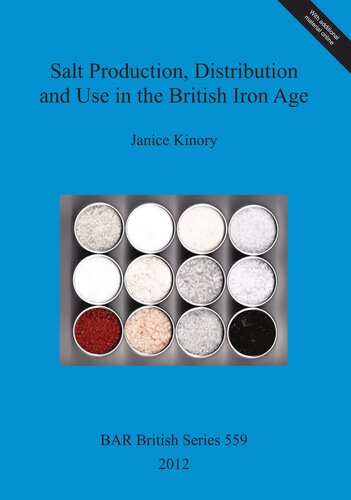

Most ebook files are in PDF format, so you can easily read them using various software such as Foxit Reader or directly on the Google Chrome browser.
Some ebook files are released by publishers in other formats such as .awz, .mobi, .epub, .fb2, etc. You may need to install specific software to read these formats on mobile/PC, such as Calibre.
Please read the tutorial at this link: https://ebookbell.com/faq
We offer FREE conversion to the popular formats you request; however, this may take some time. Therefore, right after payment, please email us, and we will try to provide the service as quickly as possible.
For some exceptional file formats or broken links (if any), please refrain from opening any disputes. Instead, email us first, and we will try to assist within a maximum of 6 hours.
EbookBell Team

4.7
46 reviewsThe study of salt during British prehistory has experienced an awakening during the past 40 years. In this work the author explores the evidence for the production of salt in the coastal regions of Essex, along the south coast and at the Droitwich salt springs in the prehistoric period. The evidence for the distribution of salt from Essex, the south coast and the salt springs of Droitwich and Cheshire is reviewed based upon discussion of briquetage finds. Models for, and implications of, salt distribution networks are considered and a speculative discussion of non-archaeologically visible distribution is also presented. Four case studies comparing Iron Age sites in salt producing and salt using regions are included to establish the relative presence of salt evidence in the archaeological record and its value as a social status discriminator. Finally, information is presented on how salt may have been used in the Iron Age and the social and ritual uses of salt are also discussed. A gazetteer and bibliography of 519 Bronze and Iron Age briquetage find sites is included as a supplemental CD.